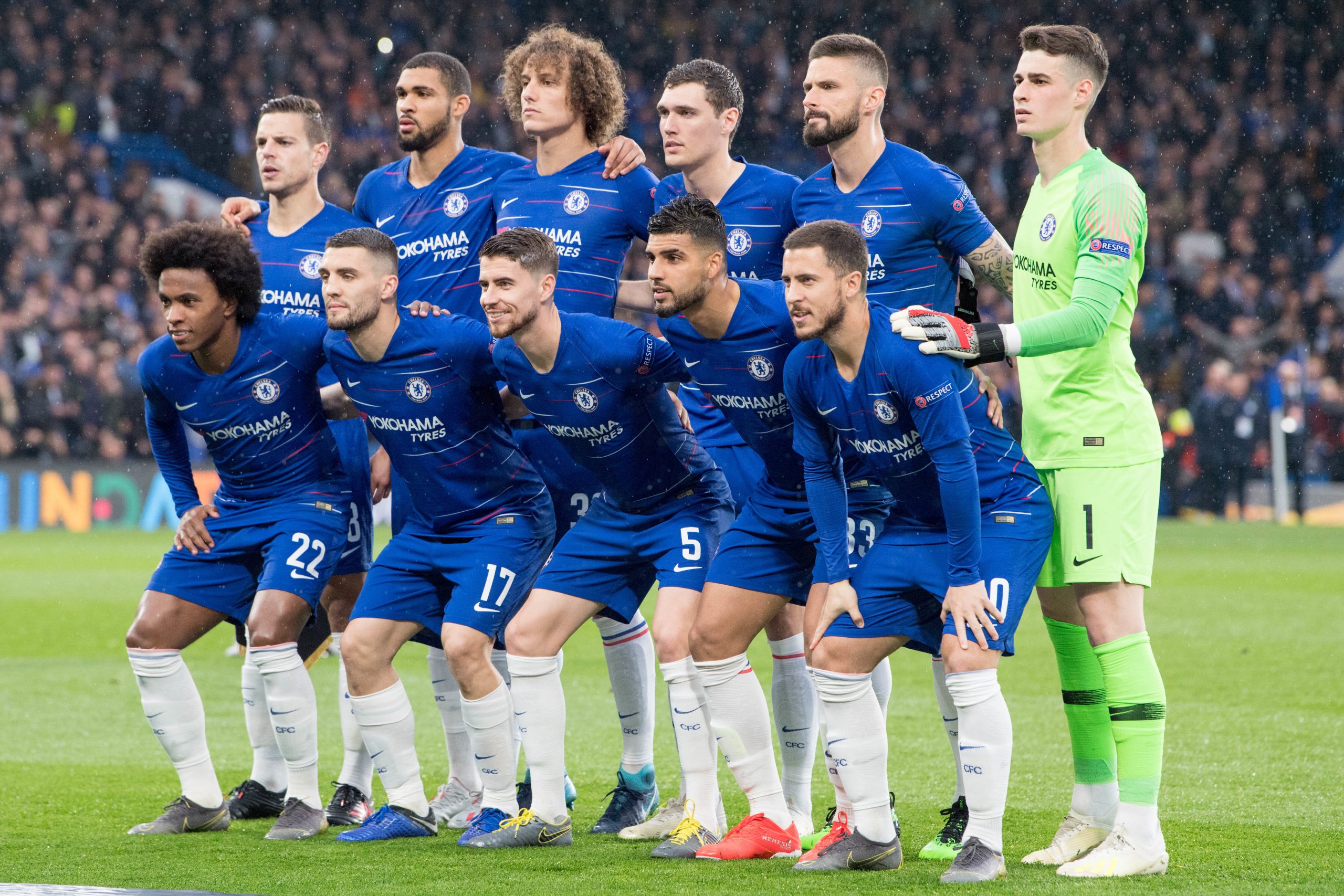Chelsea’s season was certainly full of sound and fury, but in the end it signified, mild, and possibly fleeting, improvement.
It was always going to be a year of transition for Chelsea, although at this point the more cynical supporters at Stamford Bridge might suggest, “aren’t they all?” The transition from Antonio Conte to Maurizio Sarri certainly seemed like a dramatic one. Conte emphasized and organized defensive structure while Sarri believes in always always always having the ball.
And the team did change. They went from playing 55% of the passes under Conte to 63% under Sarri. Under Conte the team didn’t care much for building from the back, the average length of a goal kick was 38.39 yards, under Sarri that dropped dramatically to 31.90. On the defensive side of the ball, they went from this:
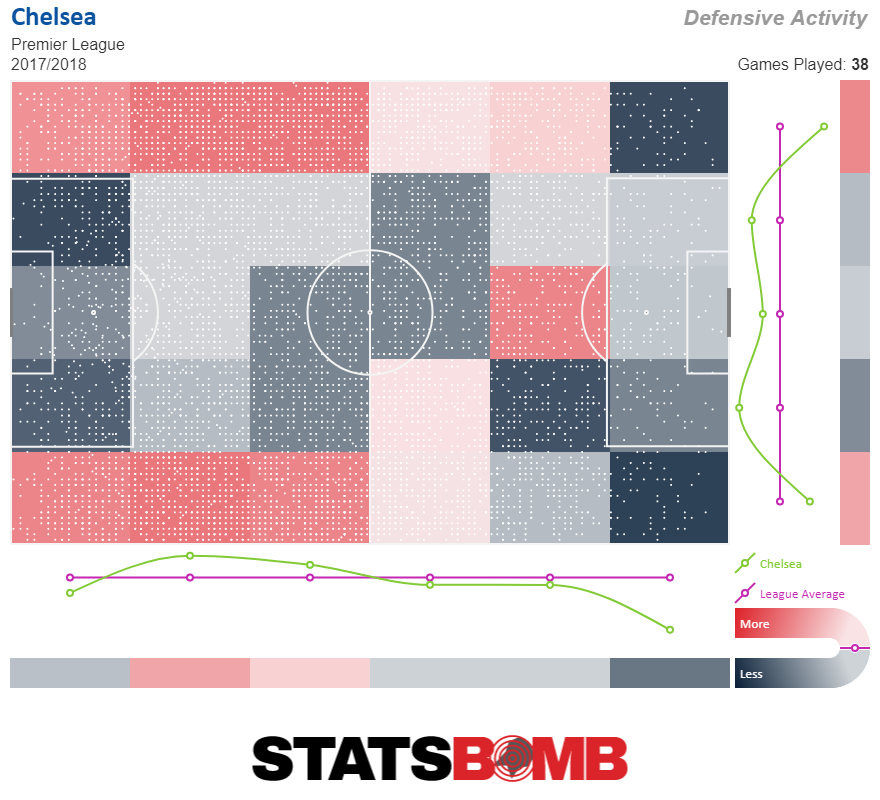
To this:
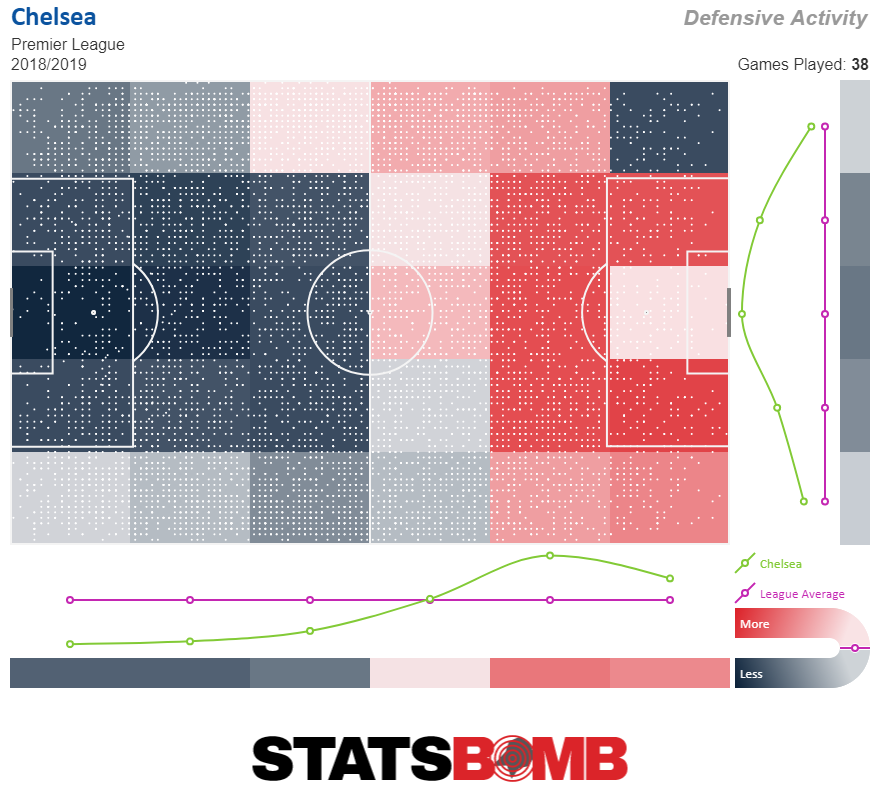
There were real changes in how the team played. But, when you stop looking at how they played, and start looking at the results that those tactical shifts led to, it’s just not clear there was very much improvement. In attack, the possession heavy version of Chelsea actually took fewer shots than Conte’s defensive side, though those shots were on average better, leading to a slight improvement in expected goals scored. Under Conte the team took 604 shots leading to 59 goals and 50.99 xG. This season the goals were virtually the same, but the xG did tick up by about three.
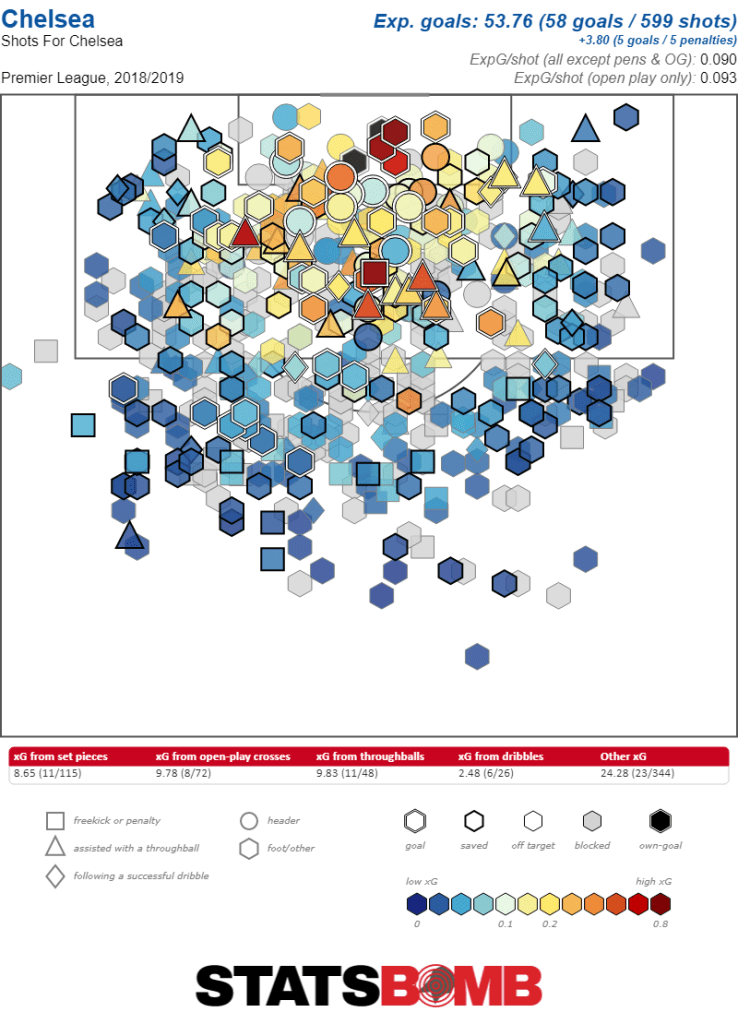
Defensively the story is similarly marginal. They went from conceding 36 non-penalty goals to 38 and their xG conceded went from 31.01 to 32.36. These are relatively small changes which is perfectly in line with their relatively small increase in points from 70 to 72 points. Although that increase proved to crucially be the difference between a fifth place campaign and Europa League rewards and a third place finish and a return to the Champions League.
It feels weird to say Chelsea aren’t very different. Watching them play is a very different experience. Their tactics are clearly very different. Instead of being positionally disciplined they get cut open with ease, but it happens rarely because they have the ball all the time. They frequently spend long passages of play with multiple players working the ball around deep in their opponent’s territory, while last year they attacked quickly and without numbers. But, neither method of attack has proved more fruitful than the other, even if one seems in moments to be more aesthetically pleasing.
Normally this would be a reasonably encouraging first season from a manager. Come in, get the talent that was used to the old system all lined and ready for the new system, improve mildly and lay the groundwork for a big second year. Chelsea’s problem is that this summer is not going to be normal, not in any way shape or form.
For starters, Eden Hazard is, somewhere between possibly and likely, on his way to Real Madrid. He’s 28, and it’s entirely reasonable for Chelsea to listen to offers if Real Madrid back up that money truck, especially if the Belgian is himself set on moving. But, still, it’s going to be hard to replace all that production.
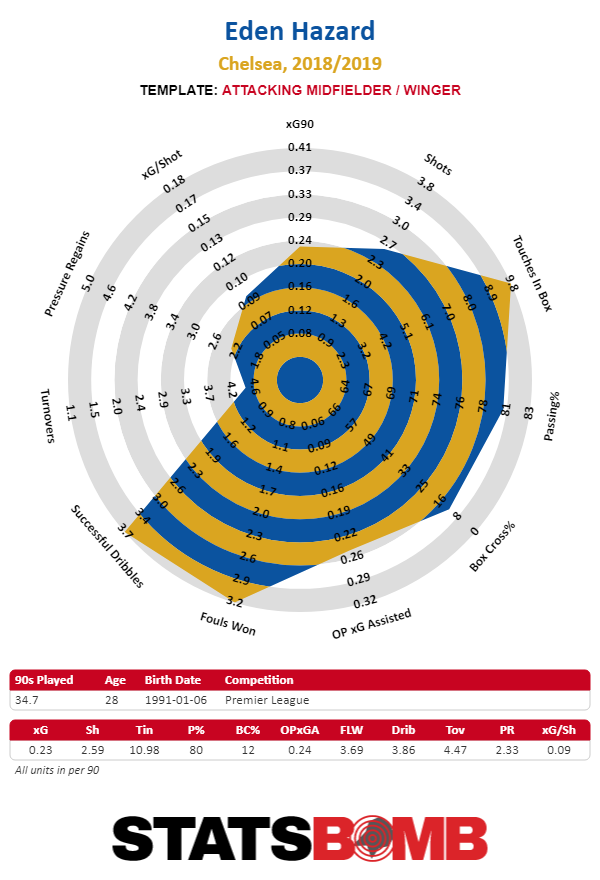
That’s obviously true if Chelsea can’t avoid their looming transfer ban, but even if the ban gets stayed pending appeal, there’s a lot of work to be done. The frontline without Hazard consists of Willian, Pedro and the on loan Gonzalo Higuain, all of whom are on the wrong side of 30. Chrisitian Pulisic will be arriving, and he’s certainly an exciting young wing option, but he’s also not Eden Hazard, even if Chelsea hope he might become the same star level player in a year or three. Callum Hudson-Odoi may or may not be healthy and may or may not be transferring to Bayern Munich. Ruben Loftus-Cheek just suffered a ruptured achilles and the man he replaced in the lineup, Matteo Kovacic may or may not be headed back to Madrid when his loan spell ends. It is not only possible, but likely that only N’Golo Kante and Jorginho are likely to be long term starters on a Sarri side, and while Kante is obviously beyond reproach, there’s a whole lot of reproaching left to do when it comes to Jorginho’s ability to defend in space and the ease with which teams began taking him out of the game by man-marking him.
The case for natural progression and improvement under Sarri rests on increased tactical cohesion going forward. But that case is undercut by the fact that if Hazard leaves then most of the players, especially most of the attacking players, are going to need replacing and upgrading. Now, maybe it’s possible that the new players will be better suited to Sarri’s style (although Kovacic, Higuain and Jorginho were all brought in specifically for the Italian manager), and therefore will take to the system quickly, but even so, as Sarri enters his second year, from a personnel standpoint it’s likely to be as chaotic as his first.
There are, of course, reasons for optimism. In addition to the incoming Pulisic and the injured Loftus-Cheek and Hudson-Odoi there are a number of young talented prospects on the book at Chelsea. Guys like Mason Mount, Tammy Abraham (still), maybe even Michy Batshuayi are possible contributing players in attack. Beyond that, Chelsea have absolutely been willing to spend in recent seasons, and if they aren’t banned it’s reasonable to expect that they will be aggressively looking to add pieces to this team, especially in midfield.
For much of Chelsea’s recent history the relationship between the transfer market and stability has been presented as a binary choice. Either the team can commit to staying the course, keeping their manager, and bringing through young talent, or they can splash the cash in the transfer market. But, given what their squad looks like, that’s no longer a choice. If Hazard goes then the team he leaves behind will both need to spend big and also need to get contributions for it’s handful of developing young players in order to keep moving in the right direction. Only doing one or the other will likely not be enough.
Chelsea had an acceptable season. They made the tiniest of strides in the right direction all while changing the way they played. But, the composition of their roster, and the possibility they’re losing their star means that the second step is going to be harder than the first. In order for Chelsea to progress from a contender for the Champions League places into a Champions League and Premier League contender themselves they’ve got a lot of work to do. That means the kids are going to have to step up and it means that their going to have to add big, impactful pieces this summer. If that happens, they way forward is clear. If not, well all the continuity in the world won’t get them enough points.
Header image courtesy of the Press Association
